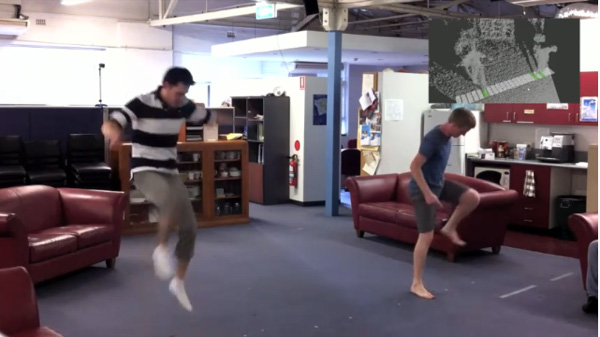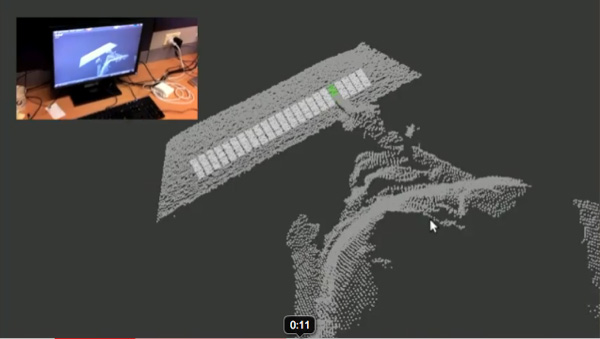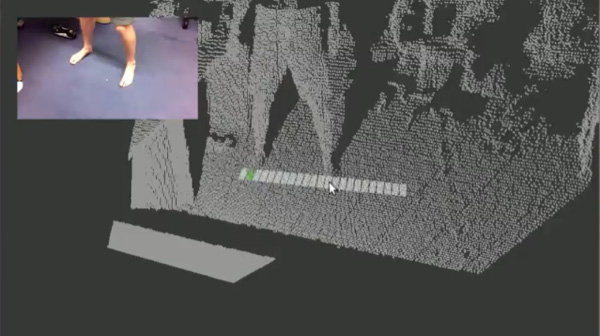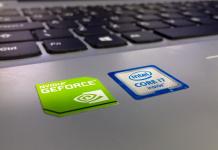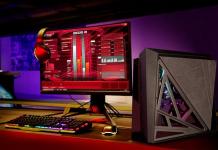Microsoft is powering into the Christmas season with Kinect. Over 2.5 million Kinect sensors had been sold as of November 29, 2010, with no signs of letting up. Ever since the Wii, developers have been eager to find new ways to use the hardware and enhance the computing experience (i.e. Headtracking for the Wii).
With the Wiimote, developers had to find different methods to connect it to a computer via infrared. The Kinect sensor has an integrated camera and a microphone, and connects to the Xbox 360 via USB. Due to the widespread use of USB, I think that the Kinect sensor is much more capable of being modified and implemented successfully, and I think it will be much popular with mainstream crowds.
With the OpenKinect movement taking shape, developers have taken the Kinect in all sorts of directions. This hack virtually allows the user to play the piano anywhere, and really jumps out at me from the rest of the pack. Firstly, the demonstration of the big piano on the ground is hilarious, but actually does demonstrate the accuracy of the virtual piano.
Recently, I had the chance to play around with the Virtuoso Piano application on my iPad. I was a bit disappointed with its precision, but the main problem would be its size restriction to the iPad screen resolution. With the Kinect sensor though, the piano can theoretically be scaled as large or small as the user defines. Even people with particularly stubby fingers (like myself) or thick fingers will have less trouble playing the piano using this method.
This opens up crazy possibilities: one simple example was demonstrated in the video with the two friends playing a song on the piano with their feet. This is actually much more difficult than it seems, by the way – two people synchronizing ordinarily on the piano is already quite difficult, but to match while running around the floor is several notches more difficult in terms of precision and timing.
The lack of “real” keys and resistance weight takes away from the realness of the experience, and I don’t think that this application will necessarily replace the piano in the professional sense. However, this application does make for a lot of fun and can definitely be a relaxing way to recreate.
If you’re a dreamer like me, you can see the possibilities: the Kinect piano in a hallway, for example, could create a hilarious melody of chaos.
Check out the OpenKinect movement. Also, we’ve got some more articles about Kinect – have a look at the Da Vinci Experience and Mario on Kinect.

